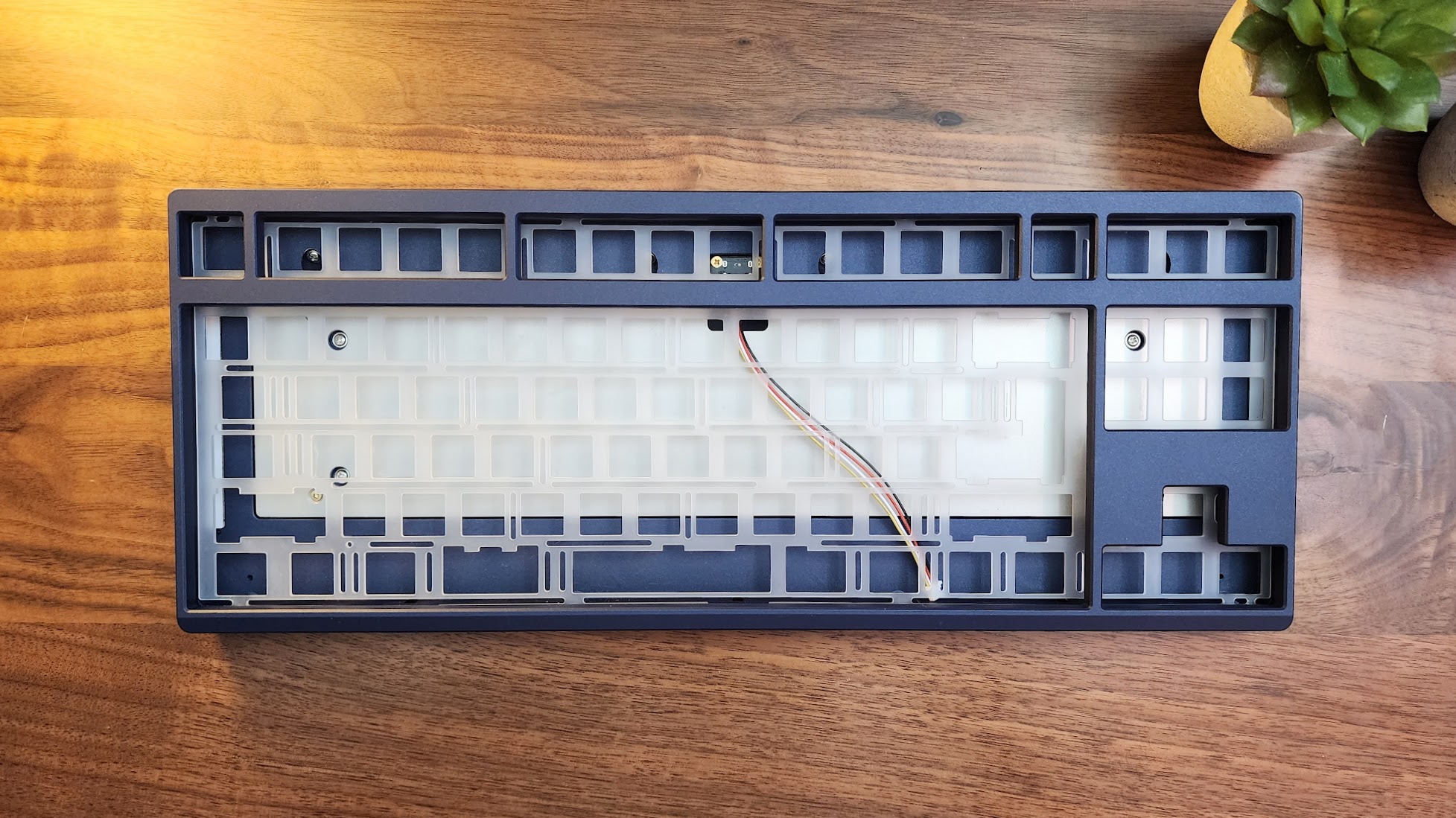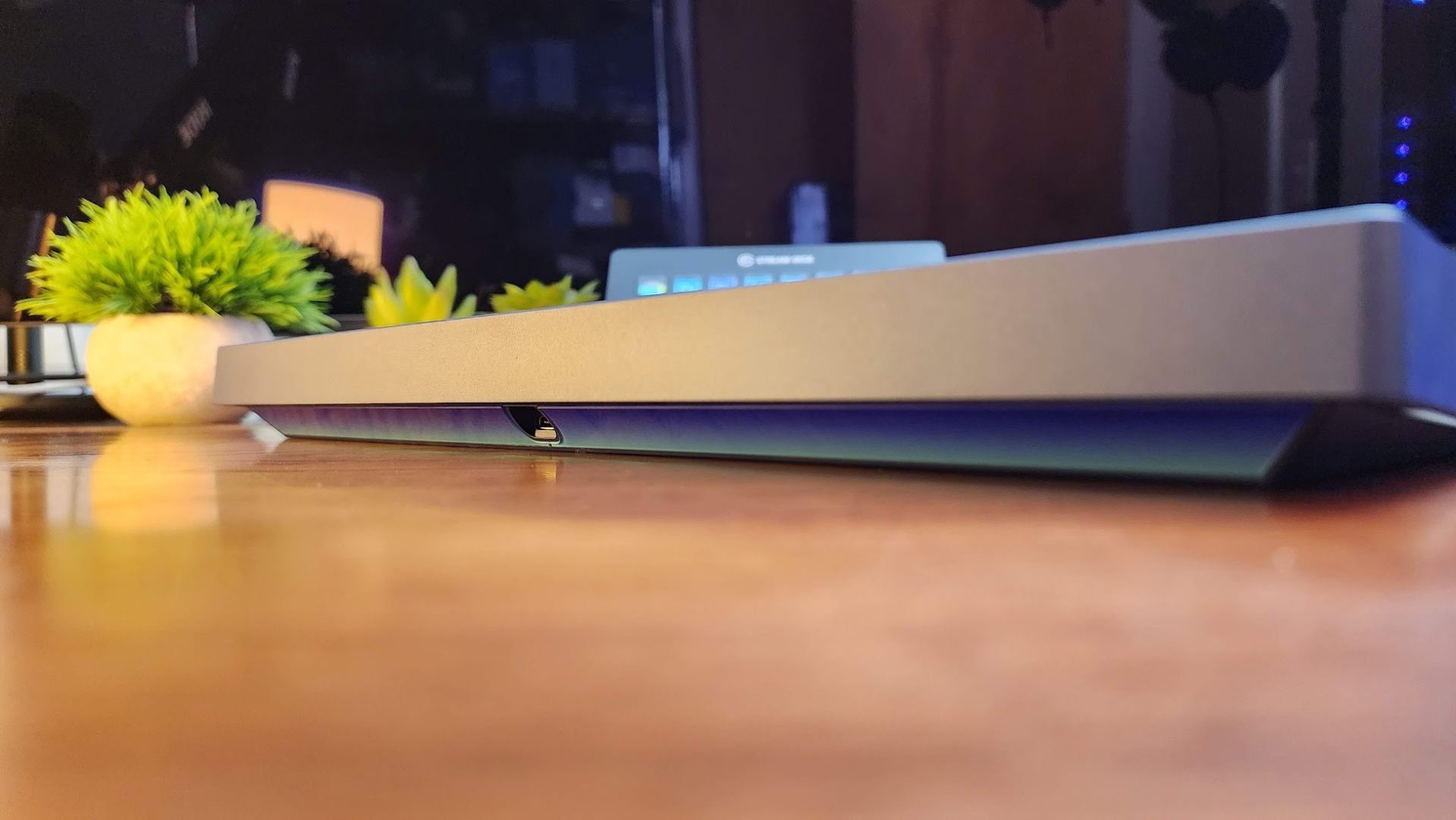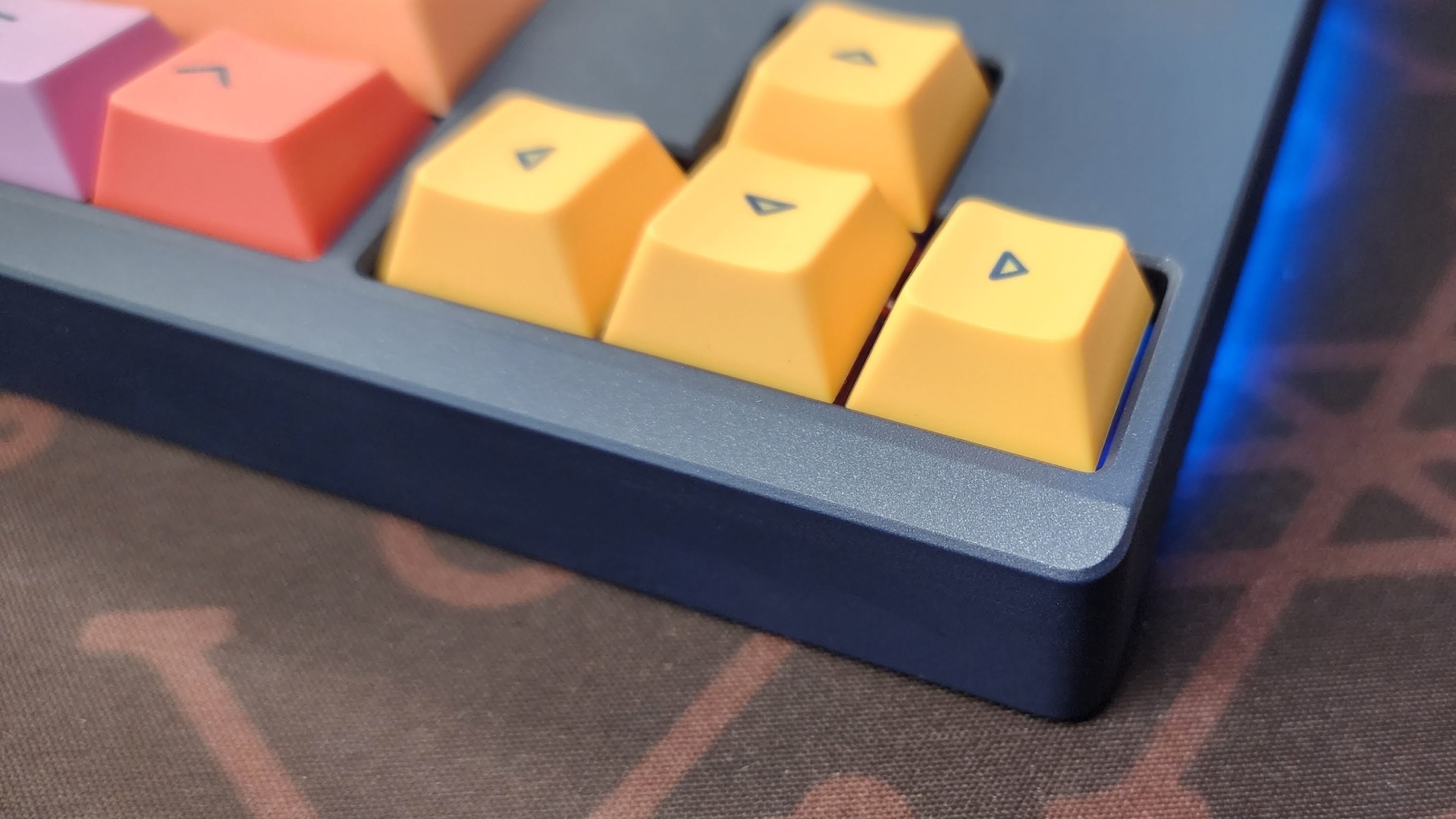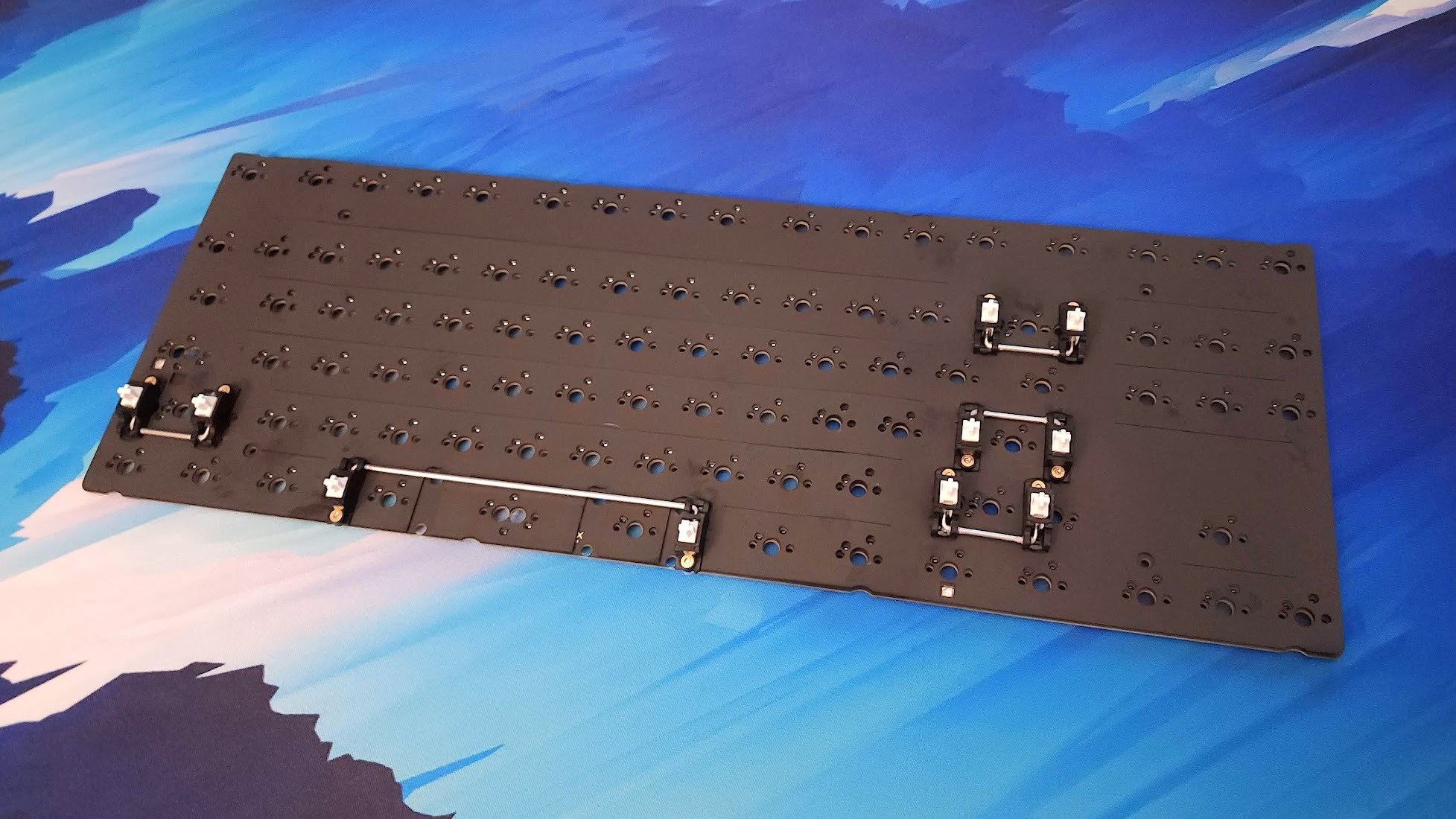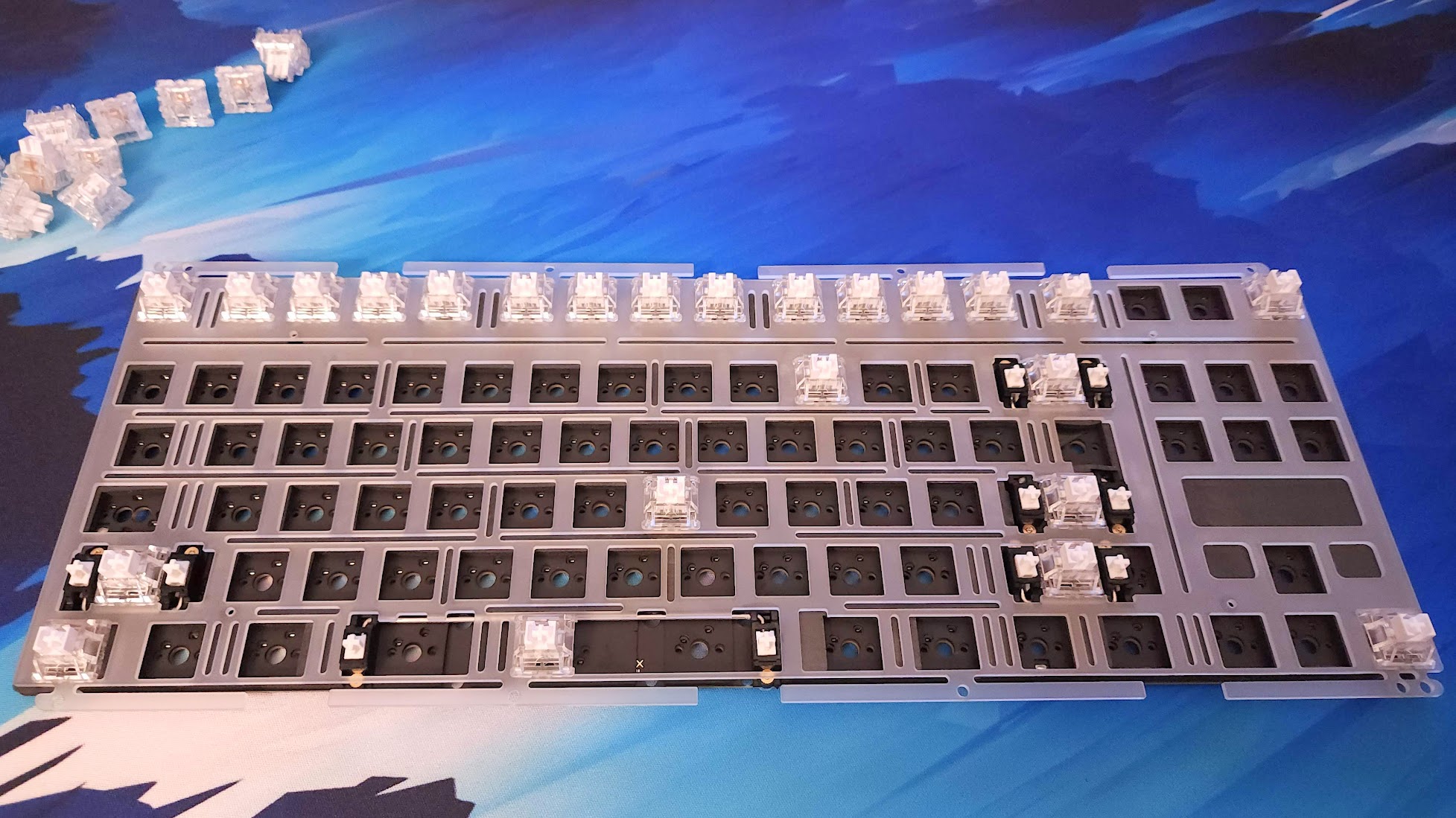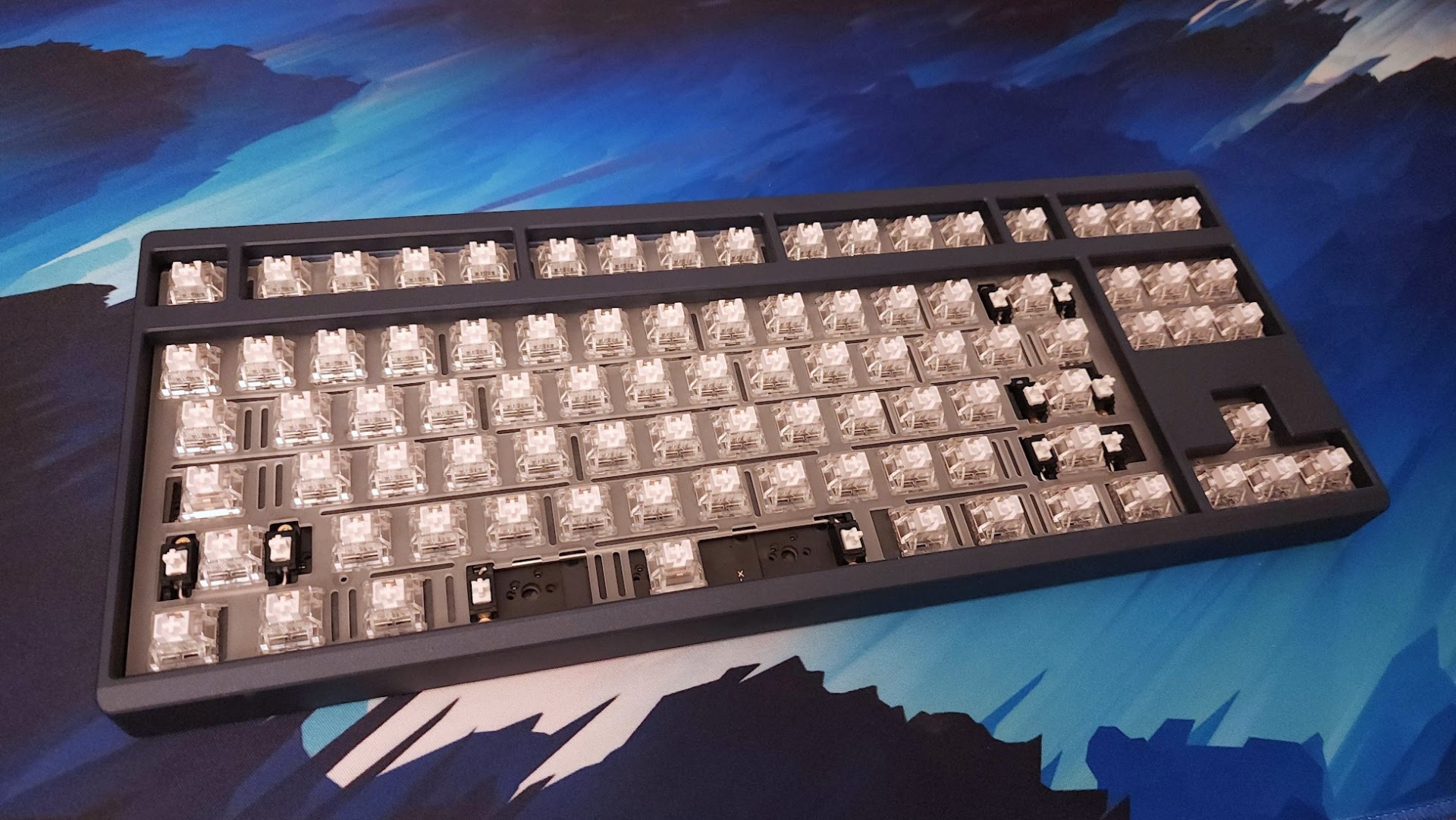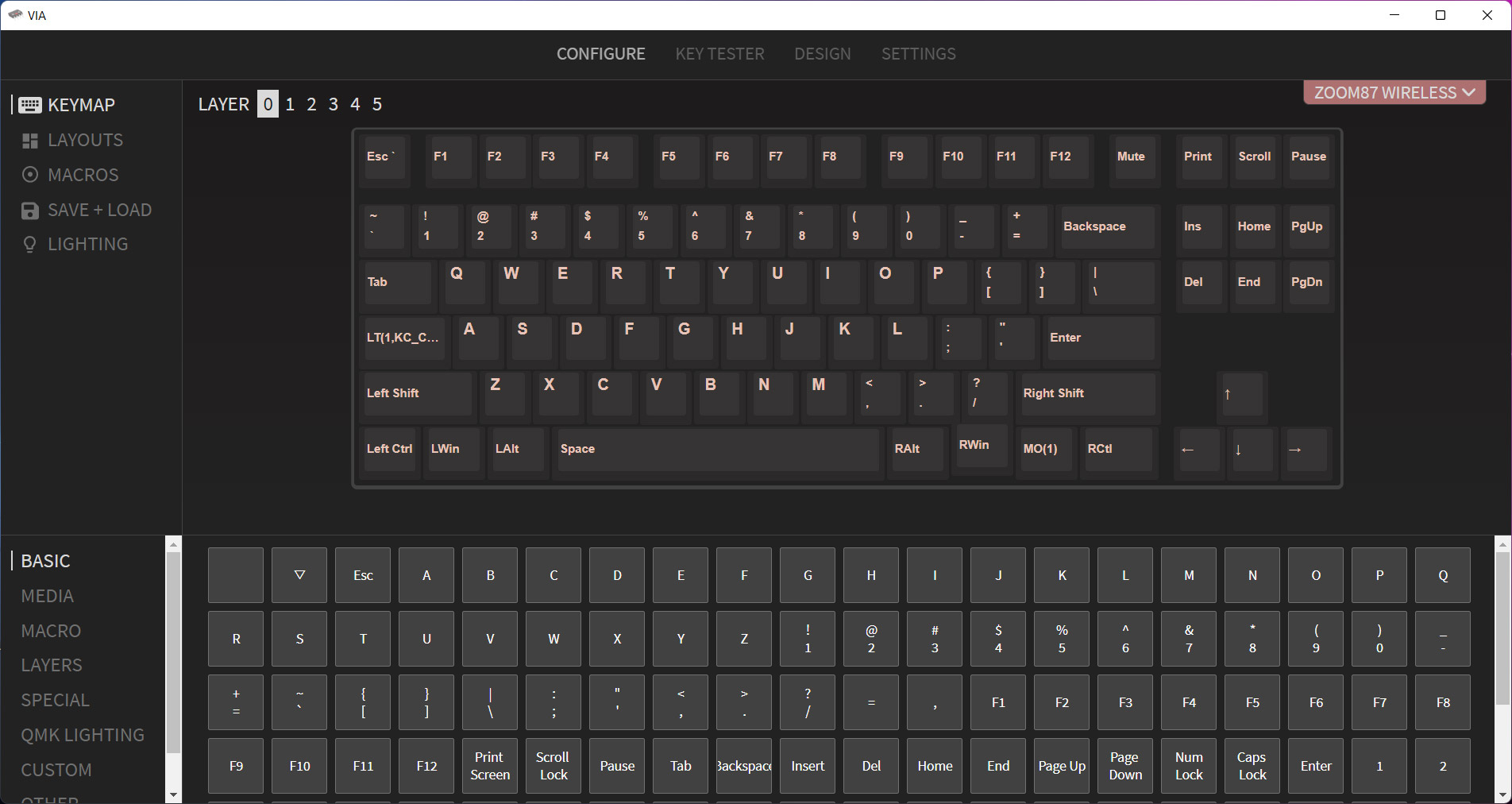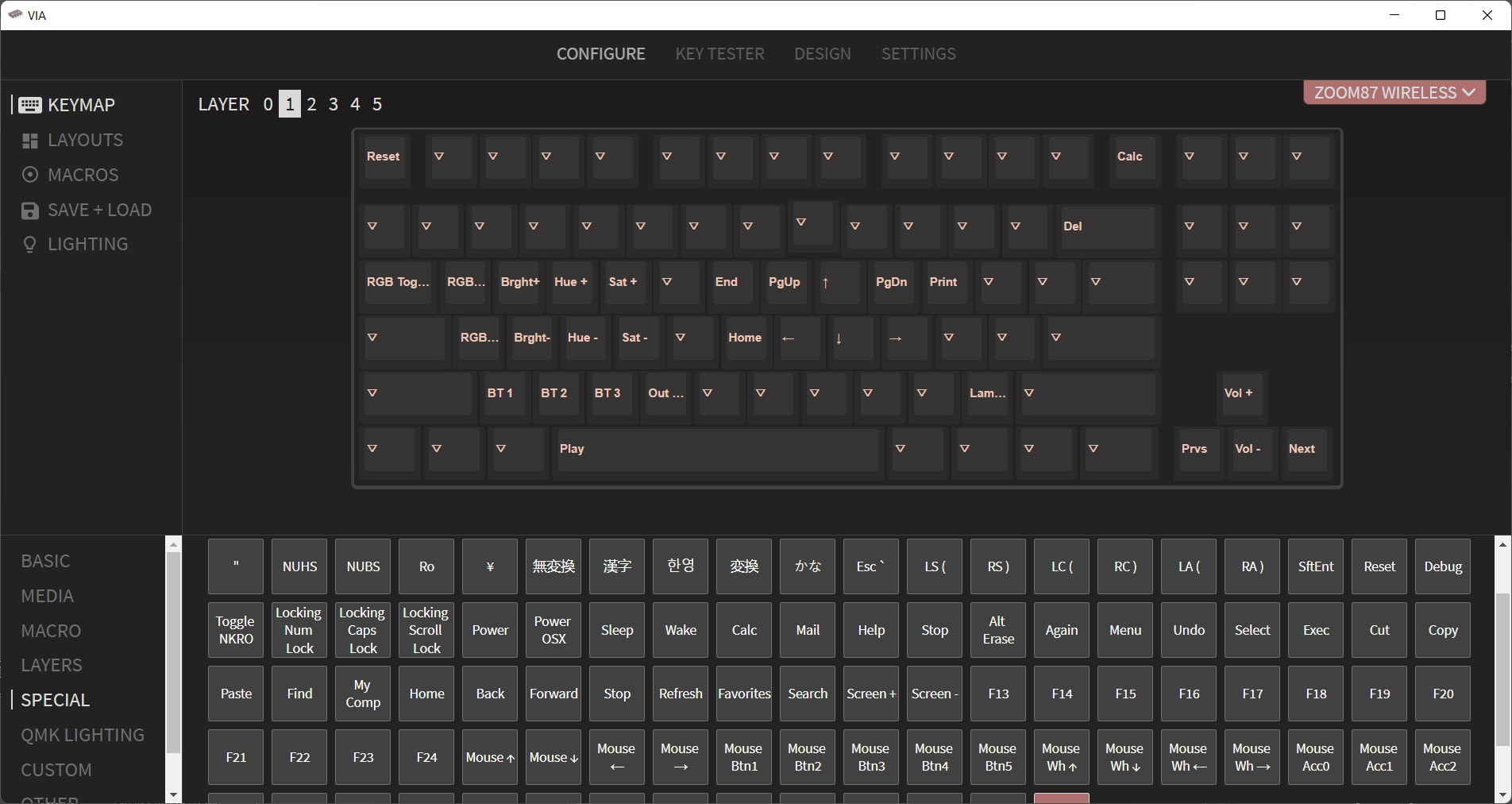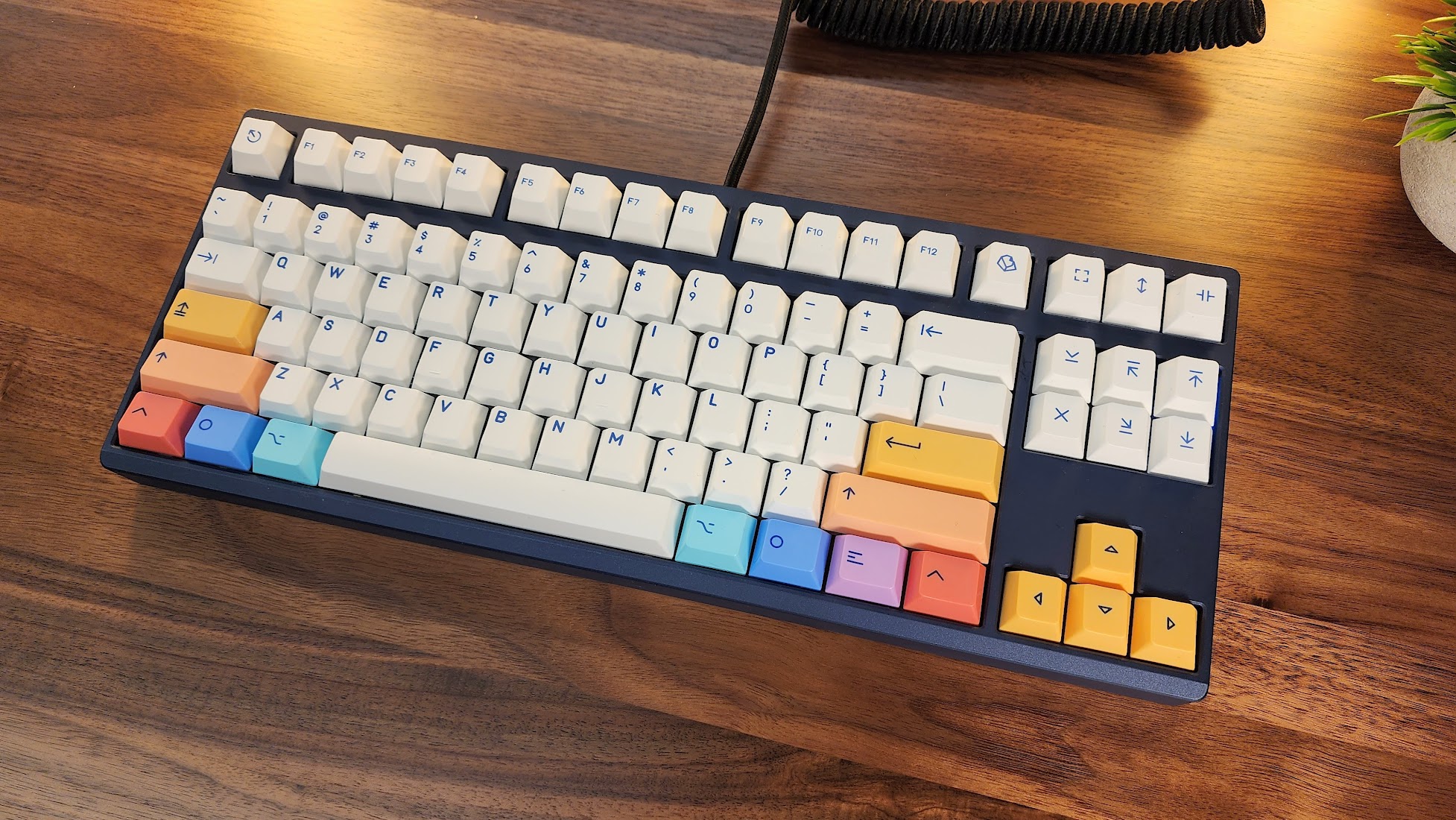Tom's Hardware Verdict
The Meletrix Zoom TKL is an excellent entry-level custom mechanical keyboard that over-delivers for its cost of entry. If you’re interested in upgrading your typing experience but want a compact form factor, it’s strongly recommended.
Pros
- +
Premium, custom keyboard features at an accessible price
- +
Excellent typing sound and feel
- +
Unique glass-back design
- +
Simplified assembly compared to the Zoom65
- +
Pre-built options available
Cons
- -
No per-key backlighting
- -
Packaging of the foam is poor
- -
Glass back doesn’t feel quite as premium as traditional steel/brass weights
Why you can trust Tom's Hardware
Meletrix debuted with a bang when it released the Zoom65 custom mechanical keyboard earlier this year. It challenged conventions of what you should expect from a keyboard at its price, and even offered a fully assembled version for users who didn’t want to build it themselves. Since then, competitors like the Qwertykeys QK65 and IRISLab JRIS65 have stolen some of the limelight, so the time was right for Meletrix to reveal it’s second product: the Zoom TKL.
The Zoom TKL follows in the Zoom65’s footsteps by overdelivering for its modest $179 cost of entry. On paper, it’s a lot like the Promise87, coming with a flex cut plate and PCB, custom-tuned PORON foam, a gorgeous metal and glass case, and a design that caters to an enthusiast-level typing experience. For an additional $50, you can even pick up a fully assembled version that comes with stabilizers, switches and keycaps, saving you money and time versus buying each and assembling it yourself.
Like the Zoom65 before it, the Zoom TKL is even better in person than on paper. Meletrix has made improvements to virtually every aspect of its design. From looks to sound and feel, this is an impressive sophomore release that bucks the trend of increasingly compact keyboards and instead delivers something traditional, impressive, and accessible to custom keyboard newcomers.
Meletrix Zoom TKL Essential Edition Specs
| Switches | None included (unknown type for |
| Lighting | Caps Lock indicator, Side underglow |
| Onboard Storage | 6 layers of keymaps (VIA) |
| Media Keys | Secondary functions |
| Connectivity | USB Type-C to Type-A |
| Cable | Braided, coiled, USB Type-C to Type-A |
| Additional Ports | None |
| Keycaps | None included |
| Construction | Aluminum case, PORON dampeners, polyethylene foam switch pad |
| Software | VIA |
| Dimensions (LxWxH) | 14 x 5.4 x 0.8 (front) x 1.2 (rear) inches |
| Weight | Approximately 4.48 pounds (built) |
Design and Materials of the Meletrix Zoom TKL Essential Edition
The Zoom TKL Essential Edition is the barebones version of the Zoom TKL, a tenkeyless keyboard designed with custom keyboard newcomers in mind. Its low price ($179 for the Essential Edition, $229 for an Assembled Edition that’s ready to go out of the box) is one of its greatest assets, but there’s a lot more going on to make this a compelling keyboard kit. The whole package is pretty great, and then the low price just seals the deal.
The Zoom TKL is designed by Meletrix, a sub-brand of Wuque Studio, makers of some of the highest regarded custom keyboard kits of the last several years. This is a design team that clearly knows how to produce a great custom keyboard, and they’ve taken that knowledge to bring features usually reserved for expensive custom boards to the masses.
While all of Meletrix and Wuque’s keyboards offer impressive aesthetics, the Zoom manages to be the most photogenic of the bunch. Viewed from the top, it has a standard TKL design, plus an additional F13 key that’s set to Mute by default. Look a little closer and you might see a bit of underglow from its down-firing side LEDs, but it’s really when you flip the kit over that it becomes something special.
The Zoom TKL offers a first for mechanical keyboards – at least in the years that I’ve been following them. Instead of having a brass or steel weight set into its bottom, it uses mirrored glass colored in a gradient that matches its case color. There’s a second glass strip along the angled back of the bottom case, so you’ll catch glimpses of it from time to time. It’s a fingerprint magnet but looks good, especially in photos.
Get Tom's Hardware's best news and in-depth reviews, straight to your inbox.
I like the design, but I will admit that it doesn't have quite the same “wow” factor as some of the mirror-finished backs found upward in the hobby. It still looks great, mind you. The gradient makes for a great accent to the case and has an aesthetic that is wholly unique. But the use of glass feels like the cost-saving measure it probably is.
What’s really cool about this design is that Meletrix plans to allow customers to mix and match their case colors and backplates. At launch, there will be ten aluminum case colors to choose from and twelve bottom plates and glass accent strips. There are 240 possible combinations, including several that swap the glass back for PVD-finished stainless steel and carbon fiber that you’ll need to pay a bit extra for.
Apart from the back, the cases are all finished using Meletrix’s new nanocoating process. The Zoom TKL is the first keyboard I’ve encountered that uses nanocoating, but it’s not unheard of in the metalworking world. It offers similar levels of protection to anodization while also offering opportunities for consistent coloration, opening the door to the wide variety of colors Meletrix is offering on this keyboard. The finish feels a bit like paint to the touch but is clearly not painted when examined closely. On my sample, the coloring was very consistent across the board, with no visible defects that I could see.
It’s a clean design, and Meletrix even makes an effort to hide some of the fasteners that hold the two halves of the case together. The keyboard comes with two long rubber feet that keep it from moving on your desk, but only the top foot is adhesive. The bottom foot is lined with rubber thumbs that fit into the fastener socket, holding it in place. The top four fastener holes are still visible, but the design helps keep the glass portion looking tidy and uninterrupted.
On the left and right side of the bottom are two LED strips that throw a bit of color down onto your desk. These can be color customized within the VIA keyboard software, and the effect is tasteful and subdued. It won’t do anything to help you type in the dark, but adds a nice touch of ambient light to spice up your setup.
The keyboard comes with a very nice zippered travel case that also holds all of the additional components and accessories. You’ll find the PCB in a large waxed envelope, similar to the Promise87 (minus the wax seal). There’s also a set of screw-in stabilizers with modding accessories, a braided and coiled USB Type-C cable, a baggie of additional hardware and a hex key for assembly, plus a set of PORON foams to add during installation. By default, each Essential Edition will come with an aluminum or polycarbonate plate, but the pre-built version will have polycarbonate only.
Both the plate and PCB are striped with flex cuts. Between each row and even in some verticals on the plate, these cuts allow the keys to move under each keystroke. I’ll talk more about the impact of this design in the typing section, but it has become a common method to add a bit of softness to the typing experience.
Like the Zoom65 (and all of Wuque Studio’s keyboards), the Zoom TKL uses a gasket-mounted design. Rather than have the plate screw into the case, the plate is lined with tabs that hold long foam gaskets. These gaskets are then sandwiched between both halves of the case, isolating vibrations and leading to a softer, more isolated typing experience.
The PCB lacks little other than per-key RGB backlighting to leave you wanting. It offers support for multiple layouts, including split shifts and a triple split spacebar. It features south-facing switch sockets for improved compatibility with Cherry profile keycap sets and also supports screw-in stabilizers, should you decide to upgrade from the included stabs. The switches are also hot-swappable, so you can easily swap them out without reaching for one of the best soldering irons.
It might seem that lacing the plate and PCB with flex cuts would lead to an unstable typing experience, but the layers of foam added to the kit help to keep things stable. They also work to tune the sound and feel of the typing experience. Included in the kit are layers of plate foam, switch foam, and a layer of PCB foam that cushions the PCB inside the case. Unfortunately, different layers were essentially squished together and separated with bits of paper, leaving them a bit deformed. Functionally, they’re fine but they look much too beat up.
There are also foam inserts for the battery slot, because the Zoom TKL also offers support for Bluetooth 5.0 wireless. Unfortunately, my sample did not include a battery for testing, but retail models will come with a 2500mAh battery by default. It’s not the largest battery, and I wish we could have tested battery life, but without per-key RGB backlighting, that capacity will be much more manageable than a fully RGB-lit keyboard.
The Zoom TKL Essential Edition will be launching to a group buy on the Meletrix website and its related vendors in the second half of November. The company is taking a different approach with the Assembled Edition and is live on IndieGoGo now. Following these initial sales, Meletrix plans to make the keyboard available in waves through its official site.
Assembling the Meletrix Zoom TKL Essential Edition
Meletrix listened to feedback on the Zoom65 and has revamped the assembly process with the Zoom TKL. It’s quite a bit simpler and falls more in line with other custom mechanical keyboard kits, like the QwertyKeys QK65, where it unscrews from the bottom to expose the insides of the case. The Zoom65 hid its screws underneath the keys, which made taking it apart again more difficult. The TKL even hides four of its eight case screws underneath a removable rubber foot so pesky hardware won’t interrupt its gorgeous glass back (though you’ll still see four screw holes along its upper edge.
You’ll need to open the case first to retrieve the switch plate, which comes secured between its two halves. With this in hand, assembly follows a routine process of adding foams and installing switches. You start by adding a layer of PCB foam to the bottom of the circuit board to prevent it from scratching your desk as you assemble. Next, you add the switch foam to the top of the PCB, install stabilizers and the thicker layer of plate foam, and then secure the plate by adding a few switches around the outer edge to keep it from moving. There are no fasteners to worry about, just install the rest of the switches and be careful not to bend any pins in the process. Finally, you slip the gasket strips onto the tabs along the edges of the plate.
You’ll have an extra step if you want to use the keyboard wirelessly. Since the battery doesn’t come pre-installed, you’ll need to remove the four screws holding the internal weight in place, set the battery into its slot, and then reinstall the weight. This takes an extra few minutes but is required for wireless to function. Our unit did not have a battery included, so I skipped this step.
From there, this PCB assembly is set onto the outer case. You’ll need to plug in the USB daughterboard and battery before doing so, but each slot is different so it’s impossible to do wrong. With the gaskets lined up with the edges, you can set the top case on top of the PCB and screw everything back together, adding the two rubber feet to the bottom. Now just add keycaps and you’re done.
Typing Demonstration for the Meletrix Zoom TKL Essential Edition
Typing Experience on the Meletrix Zoom TKL Essential Edition
The typing experience you’ll have on the Meletrix Zoom TKL will depend on the switches and foam you decide to use. Since the company recommends using all of the included foam, that’s what I went with for my first test. I was also curious how the Zoom TKL would compare to the much more expensive Promise87 custom keyboard kit, so I outfitted it with matching WS Aurora linear switches and thick PBT keycaps. The two boards look very similar on paper; could the Zoom TKL have the same typing experience as the Promise87 for $200-300 less?
The short answer is no, but while the Zoom TKL is not a shortcut to $500 keyboard quality for only $180, it still offers one of the best typing experiences you can find among any keyboard at this price. It offers a smooth, creamy sound that’s close to the Promise, without achieving quite such a deep and almost bubbly sound. It’s a tantalizing taste of what’s to come if you delve further into this hobby. But like all things related to sound, it's entirely subjective and you may even find you like the Zoom more.
With the foam, the Zoom offers a soft typing experience with gentle flex under each keystroke. The foam prevents the flex cuts in the plate and PCB from moving too much, so the movement isn’t something you’ll notice much when typing but is visible if you look closely. The sound is muted, which is common in foam-filled keyboards and great for offices, and is very even across the whole key set. It’s higher pitched than the Promise87 but lower and smoother than the Zoom65.
Compared to other keyboards in this price range, the sound and feel are essentially the best available right now. Akko has a number of aluminum keyboard kits around this price, and I have been lucky enough to try and test many of them. The Zoom TKL outperforms all of those in sound and feel. The NovelKeys NK87 is another competitor, but the Aluminum Edition is nowhere near as good and the Entry Edition uses a plastic case so competes in a different bracket. It’s not at the level of a top-tier custom, but it’s good enough that Meletrix could add a bit more flair to the top case, increase the price by a hundred dollars, and no one would bat an eye.
Remove the foam from the bottom of the case and the sound and feel both change. The keyboard has more noticeable bounce and vibration you can feel in your fingertips, not unlike the Akko ACR Pro Alice Plus. The sound is less muted but also slightly less even between the alphas and modifier keys. Meletrix says that it has spent time honing the inner cavity to offer the best sound whether you use this foam or not and it’s plainly true. There is no reverb or hollowness. The sound becomes a bit more lively and fun to type on thanks to the added tactile sensation. It really is a matter of taste which you’ll find best.
Gaming Experience on the Meletrix Zoom TKL Essential Edition
The Zoom TKL isn’t a gaming keyboard, but I didn’t have any trouble gaming on it just the same. I’ve been prepping my character for the new World of Warcraft expansion, and I had no trouble navigating my Orc through dungeons and the scant few raids I could fit in. There was no discernible lag and the softness of the keys generally made gaming more enjoyable.
Slower-paced games like WoW are easy on most keyboards, so I swapped to Battlefield 2042 to try something with more intensity. Again, I didn’t notice any lag. Even side by side with my Corsair K100 RGB with its faster optical switches, there really wasn’t a delay I could feel. The K100’s switches were more sensitive and can theoretically output more inputs a second, but in real-world FPS gaming, I didn’t find the Zoom TKL put me at any noticeable disadvantage. And since the Zoom offers hot-swappable switches, if you crave that faster actuation point, you can simply swap out for a switch that has one.
Since my prototype didn’t have a battery to utilize Bluetooth, I wasn’t able to test wireless latency. If you choose to game over Bluetooth, you should expect the typical 8ms of wireless lag that comes standard with it. I personally wouldn’t use it for twitch shooters, but for a game like WoW, it can still work fine.
Software for the Meletrix Zoom TKL Essential Edition
Like most custom keyboards, the Meletrix Zoom TKL uses VIA for all of its programming and key remapping needs. That’s a very good thing because VIA is one of the most refined and easy-to-use remapping tools currently available for custom keyboards. It doesn’t have dedicated gaming features like in-depth macro recording, but it does allow you to remap keys and get creative with how you access secondary layers.
The basics of VIA are simple and straightforward. When you plug the keyboard in, VIA detects it and provides you with a diagram of your current layout. Below it is a selection of potential remaps broken into tabs for basic keys, media controls, macros, layer access, and special functions like mouse controls, F13-F24, and assigning dedicated keys for copy and paste.
To remap a key, all you need to do is click what you would like to replace on the diagram and select the function you would like there instead. The changes apply instantly and are saved to the keyboard so they’ll function on any PC or operating system in exactly the same way. This is useful if you like to remap keys but can’t install software. Craft your layout once at home, take it to work, and revel in your fully customized experience despite your company’s IT policy.
Where you’ll find VIA a little limiting compared to dedicated software is macros. It’s easy to type in basic text strings you would like to have repeat and tie them to a single key, but the minute you want to add arrows or key combinations, things get complicated. Pulling that off requires typing in keycodes and takes much longer than the simple record button available in most gaming software.
It’s worth remembering that these macros are also stored to the keyboard’s firmware and are available without VIA running in the background, so some limitations are to be expected. Advanced features like deep, key-combo laden macros are also usually only available in dedicated software for that keyboard. VIA, on the other hand, is designed to work with many different keyboards. It’s a limitation but an understandable one.
Bottom Line
Meletrix and its parent company, Wuque Studio, have made it their mission to make custom mechanical keyboards more accessible, and the Zoom TKL is an excellent example of exactly that. It offers a premium typing experience with gorgeous aesthetics and a satisfyingly thocky sound that made me want to keep coming back to my computer. There aren’t many aluminum tenkeyless custom keyboards at this price and few, if any, are as well done as the Zoom TKL.
If you’re not sold on a heavy aluminum keyboard, the NovelKeys NK87 Entry Edition offers the same productivity-friendly layout in a bright plastic frame for only $135. The KBDFans Tiger Lite is another solid competitor in this space for only $129. Both will require you to bring your own switches and keycaps, but if you want something that’s ready to go, the iQunix F97 looks, sounds, and feels great to use (and adds a number pad for good measure!).
At $179 for the Essential Edition, the Zoom TKL offers a good value and one that’s a bit bigger if you’re not sold on the compact keyboard craze. If you’re not keen on building it yourself, the Assembled Edition will come ready to use out of the box and is still a good value at $228 (or as low as $199 through the IndieGoGo).
These boards aren’t cheap, but they’re certainly more accessible than most custom keyboards. Between the Zoom65 and the Zoom TKL, Meletrix is doing the slow work of reshaping expectations in this space, driving prices lower and expectations higher. That’s a good thing for mechanical keyboard fans everywhere and wouldn’t be possible if these products weren’t so impressive overall.
MORE: Best Gaming Keyboards
MORE: How to Pick Keycaps for Your Mechanical Keyboard
MORE: All Motherboard Content

Chris is a regular contributor for Tom’s Hardware, covering mechanical keyboards, peripherals, and content creation gear.
-
Friesiansam At UK prices, around 50% more than I paid for a Filco Majestouch 2 TKL, is not what I would call accessible pricing.Reply -
Reply
You’ll buy it and you’ll like it! Lol kiddingFriesiansam said:At UK prices, around 50% more than I paid for a Filco Majestouch 2 TKL, is not what I would call accessible pricing.
when I see stuff like this, I always think of that episode of family guy where the guy doing the movie preview says, “screw you you’ll pay to see it!” -
tummybunny I've never once typed with the lights off so regard backlighting as a negative, and pay a hefty premium (hello Realforce) to get keyboards without it. Glad to see some additional no backlighting options!Reply
